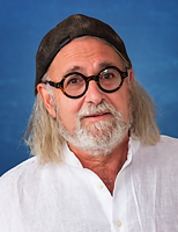The abiding theme of Sukkot, in Kabbalah, is the consecration of sacred space. The various main systems of Kabbalah concur that Divinity flows into the world through the instrument of ten emanations, or sefirot, stages in the descent of God’s energy into the world. The upper three of these emanations are purely cerebral, the levels of Wisdom, Understanding and Consciousness (Chochmah, Binah, Da’at, acronym: Chabad). The lower seven sefirot deal with the way that Divine energy is expressed in the phenomenal world. The first level of this process is psychological, in the relationship of Lovingkindness, Judgement and Mercy (Chesed, Din, Rachamim or Tiferet) while the final stage is God’s manifestation in physical life, in the qualities of Longevity, Grandeur, Sexuality and Existence (Netzach, Hod, Yesod, Malkhut).
The rituals of Sukkot evoke and support these seven lower levels of existence, though the motif of seven units that is represented over the seven days of the Festival. Four species of vegetation are brought to the worship service on the Sukkot holiday: the myrtle (hadas), willow (’arava), palm shoot (tamar) and citron (etrog). In the kabbalistic classic Tiqqunei ha-Zohar, the four species represent the body itself, both the human body and the Divine cosmic body of God:
The etrog is the Shekhinah, the heart, the essence of the limbs of the body, which are the myrtle, the palm and the two willow branches. The heart is in the center, and the rest of the limbs surround it. Because of this, the etrog is the Shekhinah, as the Masters of the Mishnah taught (Sukkah 29b): if its stem has been removed, or if it has been blemished, it is unfit. For it must be like the Shekhinah, of whom it says: You are completely beautiful, my bride, there is no blemish in you (Song of Songs 4:7). The palm branch, that is the lulav, of which it says: If the leaves have split off, it is unfit … Whoever blesses it on the first day of Sukkot, binds themselves to the unity of everything, Life! (Chai, whose numerical coefficient is eighteen) for the eighteen vertebrae in the spine. Therefore the Masters of the Mishnah taught: the lulav resembles the spine. The secret meaning of the lulav is (Psalms 92:13) the righteous shall flourish like a palm (Tiqqunei ha-Zohar 29a).
The myrtle has a triune nature, in that it is made up of a series of three leaves in a cluster, which invokes the three Patriarchs, paradigms of the intermediate sefirot Chesed, Din and Tif'eret. The two willow branches invoke Netzah and Hod. The palm shoot or lulav, symbolizes the quality of mercy or Tiferet, while the etrog, or citron, symbolizes Malkhut. Holding the lulav and etrog together is an act of unification, symbolizing the union of the transcendent and the corporeal.
The lulav is shaken eighteen times. This action, like the eighteen blessings of prayer, relates to the eighteen vertebrae of the backbone. Since the lulav is symbolic of the Divine backbone, any fracture in its structure renders it unfit for use. Hence, the lulav and petitional prayer are ways of meditatively imagining the Divine.
The spherical etrog is held in the left hand, in line with the heart, invoking the wholeness of the paradigmatic figures Jacob and Solomon. The etrog has the same aroma as the tree from which it comes (Sukkah 39b; Rosh Ha-Shanah 14b), indicating the immanence of the Tree of Life in the realm of the Tree of Knowledge. The lulav and etrog are instruments of the adherent's union with the emanation of God into the World.
According to these kabbalistic interpretations, the symbols of the Sukkot festival celebrate the descent of Divine effluence. The sukkah itself represents the sanctified inner realm of the holy. Its six dimensions, (up, down, north, south, east and west) as well as the central point of its existence, also evoke the seven lower sefirot. Elsewhere, the Zohar introduces the concept of every day of Sukkot being an opportunity to “fix” the energies of one of the lower seven sefirot, through the act of inviting the seven shepherds, the ushpizin or Divine guests, Abraham, Isaac, Jacob, Moses, Aaron, Joseph and David (Zohar II 103a).
So it is that the practices of Sukkot sanctify the spatial nature of Divinity as it flows into the physical world. Chag Sameach!

